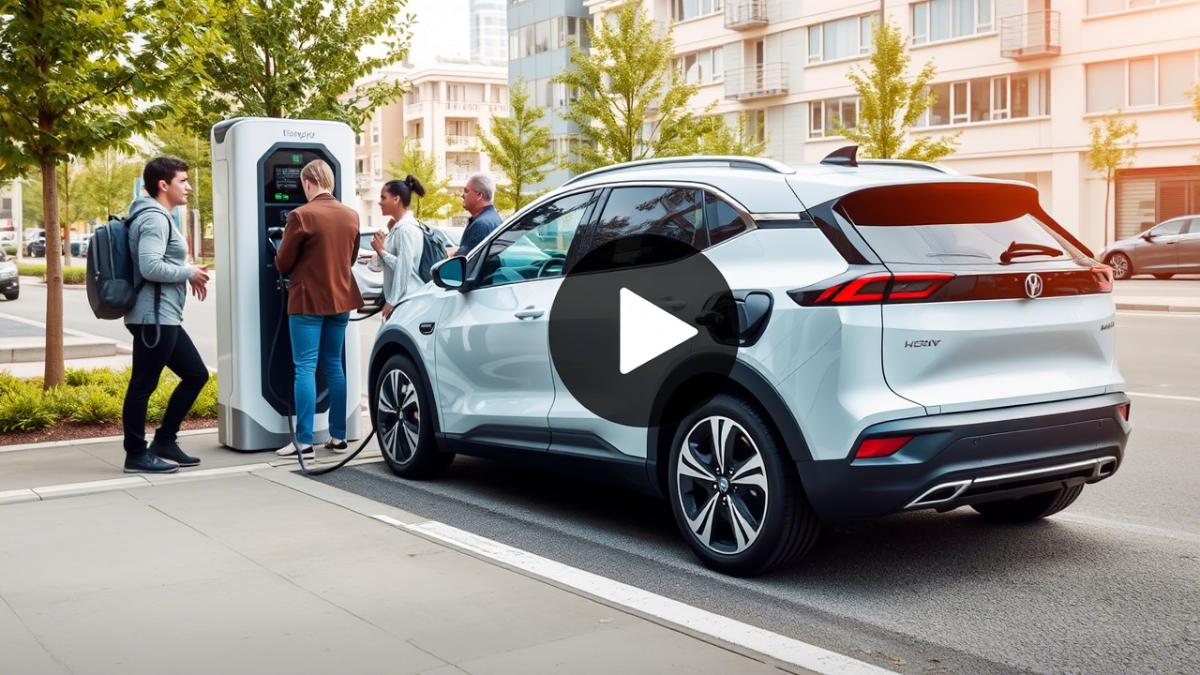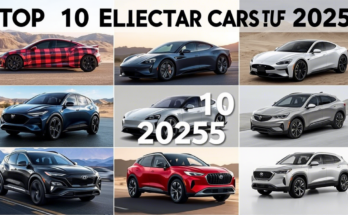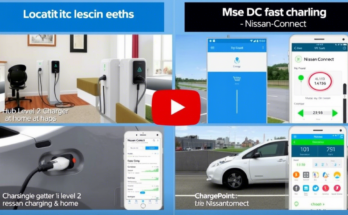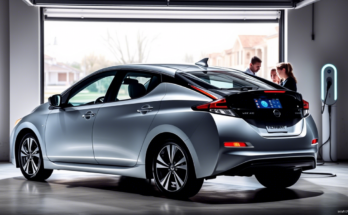Electric vehicles (EVs) are no longer a futuristic concept but a tangible reality, reshaping the automotive landscape. With growing concerns about climate change, rising fuel costs, and technological advancements, transitioning to an EV has become a practical and eco-friendly choice for many drivers. This guide will walk you through every step of making the switch, from understanding the benefits of EVs to addressing common concerns and ensuring a seamless transition.
Why Make the Switch?
Before diving into the specifics of transitioning to an EV, it’s essential to understand why this shift is worth considering. The advantages extend beyond environmental impact, encompassing financial savings, convenience, and cutting-edge technology.
First and foremost, EVs significantly reduce greenhouse gas emissions compared to traditional internal combustion engine vehicles. By relying on electricity rather than fossil fuels, they help combat air pollution and create a cleaner planet. Beyond the environmental perks, EVs often come with lower operating costs. Electricity is generally cheaper than gasoline, and maintenance expenses are reduced due to fewer moving parts in electric drivetrains.
Additionally, governments worldwide are offering incentives to encourage EV adoption. Tax credits, rebates, and exemptions from specific fees make purchasing an EV more affordable. For those seeking long-term savings, these incentives can offset the initial cost difference between EVs and conventional cars.
Understanding the Basics of EVs
To make an informed decision, you must familiarize yourself with how EVs work and the terminology associated with them. Unlike traditional vehicles powered by gasoline or diesel, EVs rely on electric motors fueled by rechargeable batteries. These batteries store energy that powers the motor, eliminating the need for fuel tanks and exhaust systems.
One key term is “range,” which refers to the distance an EV can travel on a single charge. Modern EVs offer ranges that vary from 100 miles to over 400 miles, depending on the model and battery capacity. Another important concept is “charging time.” While some EVs can recharge quickly at public fast-charging stations, others may take several hours when plugged into a standard home outlet.
Types of EVs also vary. Fully electric vehicles (BEVs) run solely on electricity, while plug-in hybrid electric vehicles (PHEVs) combine a gasoline engine with an electric motor. PHEVs provide flexibility for longer trips but still rely partially on fossil fuels. Understanding these distinctions will help you choose the right type of vehicle for your needs.
Assessing Your Driving Habits
Transitioning to an EV requires evaluating your current driving habits. Start by analyzing your daily commute and typical mileage. If your daily drives are within the range of most EVs, you’ll likely find the switch manageable. Many people discover that their regular routines don’t exceed the average EV range, making charging less frequent than anticipated.
Consider whether you frequently take long road trips. Thanks to expanding charging networks, EVs are increasingly capable of handling extended journeys, so planning is crucial. Familiarize yourself with charging station locations along your routes to avoid range anxiety—the fear of running out of battery before reaching a charging point.
Another factor to evaluate is parking arrangements. Homeowners with garages or driveways can install home charging equipment, simplifying the process. Apartment dwellers or those without dedicated parking spaces may need to explore alternative solutions, such as public charging stations or workplace charging options.
Exploring Charging Options
Charging infrastructure plays a vital role in the EV ownership experience. Understanding the different types of chargers available will prepare you for day-to-day use. Level 1 chargers utilize a standard household outlet and are suitable for overnight charging. However, they provide slower charging speeds, adding only a few miles of range per hour.
Level 2 chargers require professional installation and deliver faster charging times, making them ideal for home use. These chargers can replenish an EV’s battery much quicker, often restoring significant range overnight. Public charging stations typically feature Level 2 or DC fast chargers, adding hundreds of miles of range in under an hour.
Research local charging networks to identify convenient locations near your home, workplace, and frequently visited destinations. Apps and online maps can help locate nearby stations and provide real-time information about availability and pricing. Some services even allow you to reserve a charger in advance, ensuring peace of mind during busy periods.
Financial Considerations
While EVs often boast lower operating costs, the upfront price tag can deter some buyers. Fortunately, there are ways to mitigate this expense. Federal and state incentives, such as tax credits and rebates, can substantially reduce the purchase price—research programs specific to your region to maximize savings.
Leasing is another option worth exploring. Many manufacturers offer attractive lease deals on EVs, allowing you to enjoy the benefits without committing to a complete purchase. Additionally, leasing enables you to upgrade to newer models as technology advances, ensuring access to the latest features and improvements.
Insurance premiums for EVs may differ from those for traditional vehicles. Contact your insurance provider to discuss potential rate changes and inquire about discounts for eco-friendly cars. Remember that maintenance costs tend to be lower for EVs, further enhancing their financial appeal over time.
Preparing Your Home for an EV
Preparing your property is critical to charge your EV at home. Assess your electrical system to ensure it can handle the additional load a Level 2 charger requires. Consult a licensed electrician to determine whether upgrades are necessary.
Installing a home charger involves selecting the right equipment and finding a suitable location. Wall-mounted units are popular due to their compact design and ease of use. Choose a spot near your vehicle to prolong the charger’s lifespan, ideally sheltered from the elements.
Portable chargers offer flexibility for renters or individuals unable to install permanent charging solutions. These devices connect to standard outlets and can be stored easily when not in use. While slower than dedicated chargers, they serve as a practical backup option.
Addressing Range Anxiety
Range anxiety remains one of the most common concerns among prospective EV owners. Overcoming this fear involves education and preparation. Modern EVs boast impressive ranges, and advancements in battery technology continue to extend these capabilities. Monitoring your vehicle’s remaining charge and planning stops at charging stations alleviates uncertainty.
Apps designed for EV drivers provide valuable tools for managing range anxiety. They display detailed maps highlighting charging locations, estimated wait times, and compatibility with your vehicle. Some apps even calculate optimal routes based on your EV’s range and available chargers.
Building confidence in your EV’s capabilities takes time. Start by taking shorter trips to gauge how far you can travel on a single charge. As you become more comfortable, gradually incorporate longer journeys into your routine. With experience, range anxiety diminishes, replaced by the satisfaction of driving a sustainable vehicle.
Embracing the EV Lifestyle
Owning an EV isn’t just about transportation—it’s about embracing a new way of life. From participating in community initiatives to adopting eco-conscious habits, the EV lifestyle fosters connection and responsibility. Joining local EV owner groups or online forums allows you to share experiences, tips, and recommendations with like-minded individuals.
Participating in events such as ride-and-drive demonstrations or sustainability workshops enhances one’s knowledge and enthusiasm. These activities also provide opportunities to test-drive different models and learn about emerging technologies. Staying informed ensures one remains at the forefront of the EV revolution.
Adopting energy-efficient practices complements your decision to go electric. Consider pairing your EV with renewable energy sources like solar panels to reduce your carbon footprint further. Supporting businesses and organizations committed to sustainability aligns with the values inherent in choosing an EV.

FAQs About Transitioning to an EV
What is the average cost of an EV?
The price of an EV varies widely depending on the make and model. Entry-level options start around $30,000, while luxury models can exceed $100,000. Incentives and tax credits can lower the effective cost.
How long does it take to charge an EV?
Charging times depend on the type of charger used. Level 1 chargers take 8-20 hours to charge fully, Level 2 chargers require 4-8 hours, and DC fast chargers can charge up to 80% in 20-40 minutes.
Are there enough charging stations?
Charging infrastructure is rapidly expanding, with thousands of stations available nationwide. Urban areas tend to have denser networks, but rural regions are catching up. Planning trips with charging stops in mind ensures a smooth experience.
Can I tow with an EV?
Some EVs are equipped for towing, but their capacity is generally lower than that of traditional trucks or SUVs. Check the specifications of the model you’re interested in to confirm its towing capabilities.
Is it expensive to maintain an EV?
Maintenance costs for electric vehicles are typically lower than those for gas-powered cars. Fewer moving parts mean fewer repairs and regenerative braking reduces the wear on brake pads.
Do EVs perform well in extreme weather?
Cold temperatures can reduce a range, but advancements in battery technology mitigate this issue. Preconditioning the cabin while plugged in helps preserve range during winter months.



